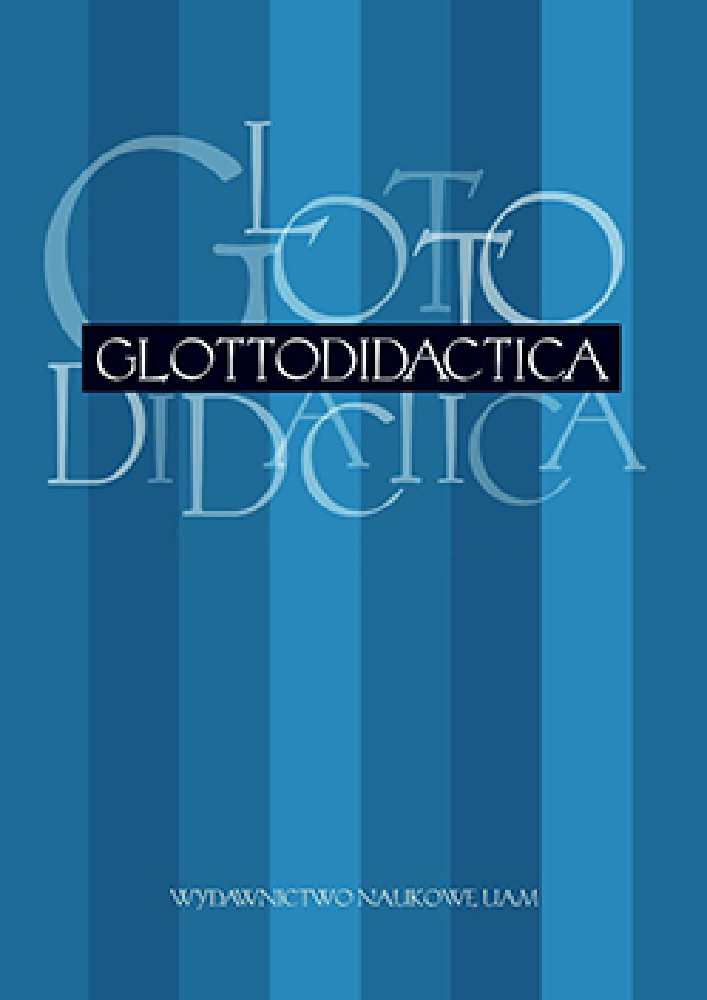Abstract
The structures of a foreign language, presented by a teacher-sender, are received by
a learner as specific signals that are subject to phonetic-phonological and graphic-graphemic decoding. They are accordingly transferred to the foreign-language center, in which semanticgrammatical decoding is performed. Individual structures acquired in this fashion constitute constructive elements of the storage mechanism for learning language in the form of constant structure-matrices. In the process of the receptive-productive dynamization of the language’s structures, the learner simultaneously masters their effectiveness and potential, which make it possible to apply the codified information to current situations. Autonomous forms of learning a foreign language lead to an increase in the reserves of vocabulary and to its more effective application. Independent manipulation of a foreign language in emergent situations means that the learner develops the ability to use it in contacts with communicative partners.
References
Desselmann, G. / Hellmich, H. (1981). Didaktik des Fremdsprachenunterrichts. Deutschs als Fremdsprache. Leipzig: Verlag Enzyklopädie.
Engel, U. et al. (1999). Deutsch-polnische kontrastive Grammatik. Band 1–2. Heidelbrg: Julius Groos Verlag.
Krüger, M. (1985). Übungsabläufe im kommunikativen Fremdsprachenunterricht. In: G. Neuner / M. Krüger / U. Grewer (Hrsg.). Übungstypologie zum kommunikativen Deutschunterricht. Berlin et al.: Langenscheidt, S. 17–28.
Szczodrowski, M. (2016). Zum Wesen der fremdsprachlichen Einkodierungsprozesse. Glottodidactica. An International Journal of Applied Linguistics, XLIII/1, S. 69–80.
Zabrocki, L. (1972). Zur Theorie der Aufbereitung des Sprachmaterials im Fremdsprachenunterricht. Glottodidactica. An International Journal of Applied Linguistics, VI, S. 3–39.
Zabrocki, L. (1977). Die Entwicklung und Integrierung des Unterrichtsmaterials. In: M. Triesch (Hrsg.). Probleme des Deutschen als Fremdsprache. Forschungsberichte und Diskussionen. Bericht von der 1. Internationalen Deutschlehrertagung 1967 in München. München: Max Hueber Verlag, S. 56–79).
License
Authors
Authors of texts accepted for publication in Glottodidactica are required to complete, sign and return to the Editorial team’s office the Agreement for granting a royalty-free license to works with a commitment to grant a CC sub-license.
Under the agreement, the authors of the texts published in Glottodidactica grant Adam Mickiewicz University in Poznań a non-exclusive, royalty-free license and authorize the use of Attribution-NoDerivatives 4.0 International (CC BY-ND 4.0) Creative Commons sub-license.
The authors retain the right to the free disposal of the work.
Users
Interested Internet users are entitled to use works that have been published in Glottodidactica since 2016, under the following conditions:
▪ attribution – obligation to provide, together with the distributed work, information about the authorship, title, source (link to the original work, DOI) and the license itself.
▪ no derivatives – the work must be preserved in its original form. Without the author's consent, it is not possible to distribute the modified work in the form of translations, publications, etc.
Copyrights are reserved for all texts published before 2016.
Miscellaneous
Adam Mickiewicz University in Poznań retains the property right as a whole (layout, graphic form, title, cover design, logo etc.).
Privacy statement
The names and email addresses published on this journal site will be used exclusively for the purposes declared by this journal and cannot be used for any other purpose or by any other party.





